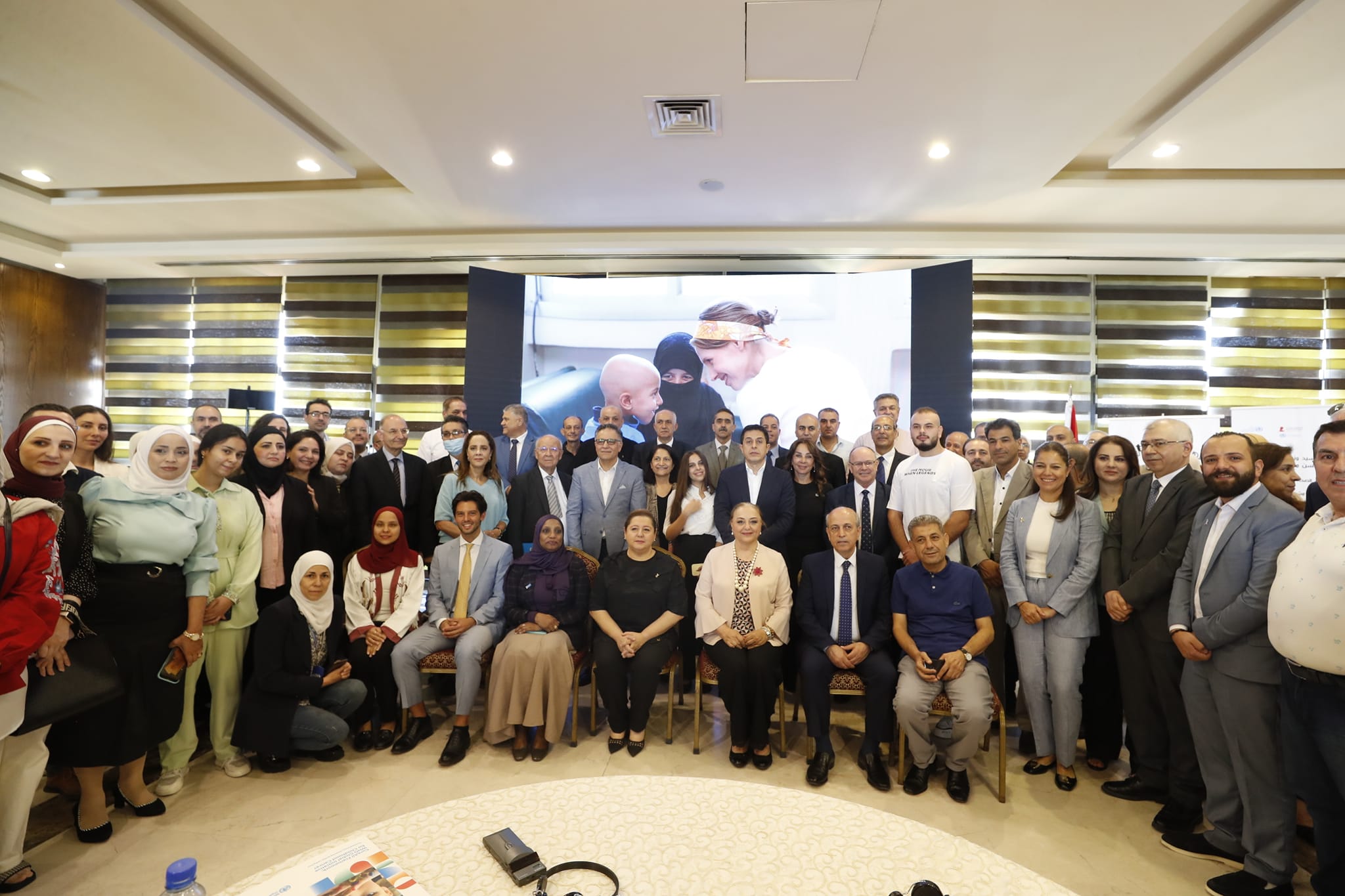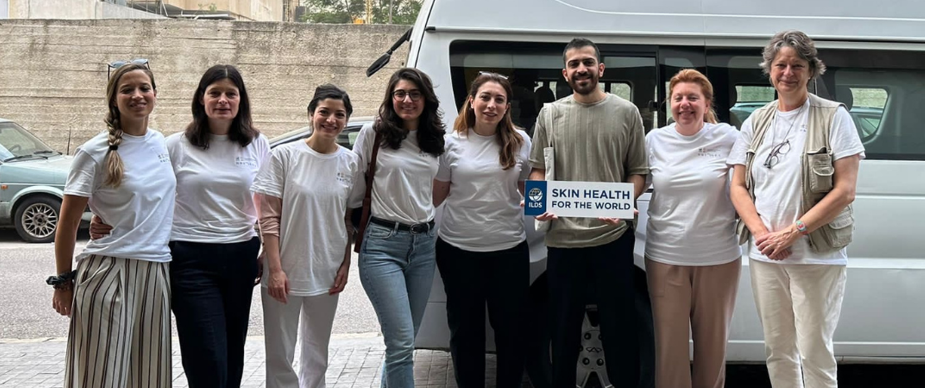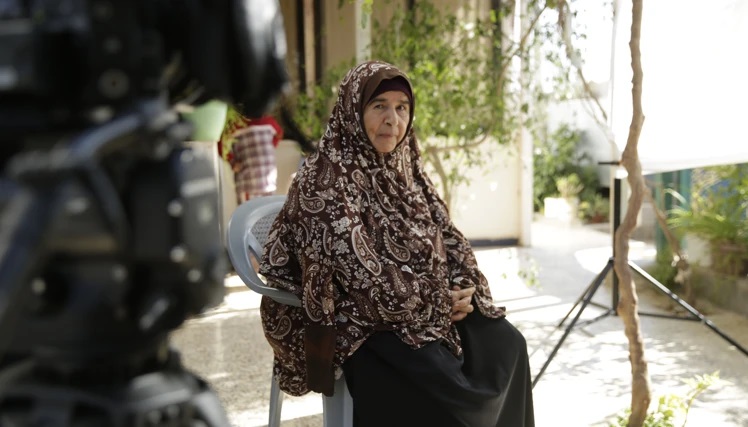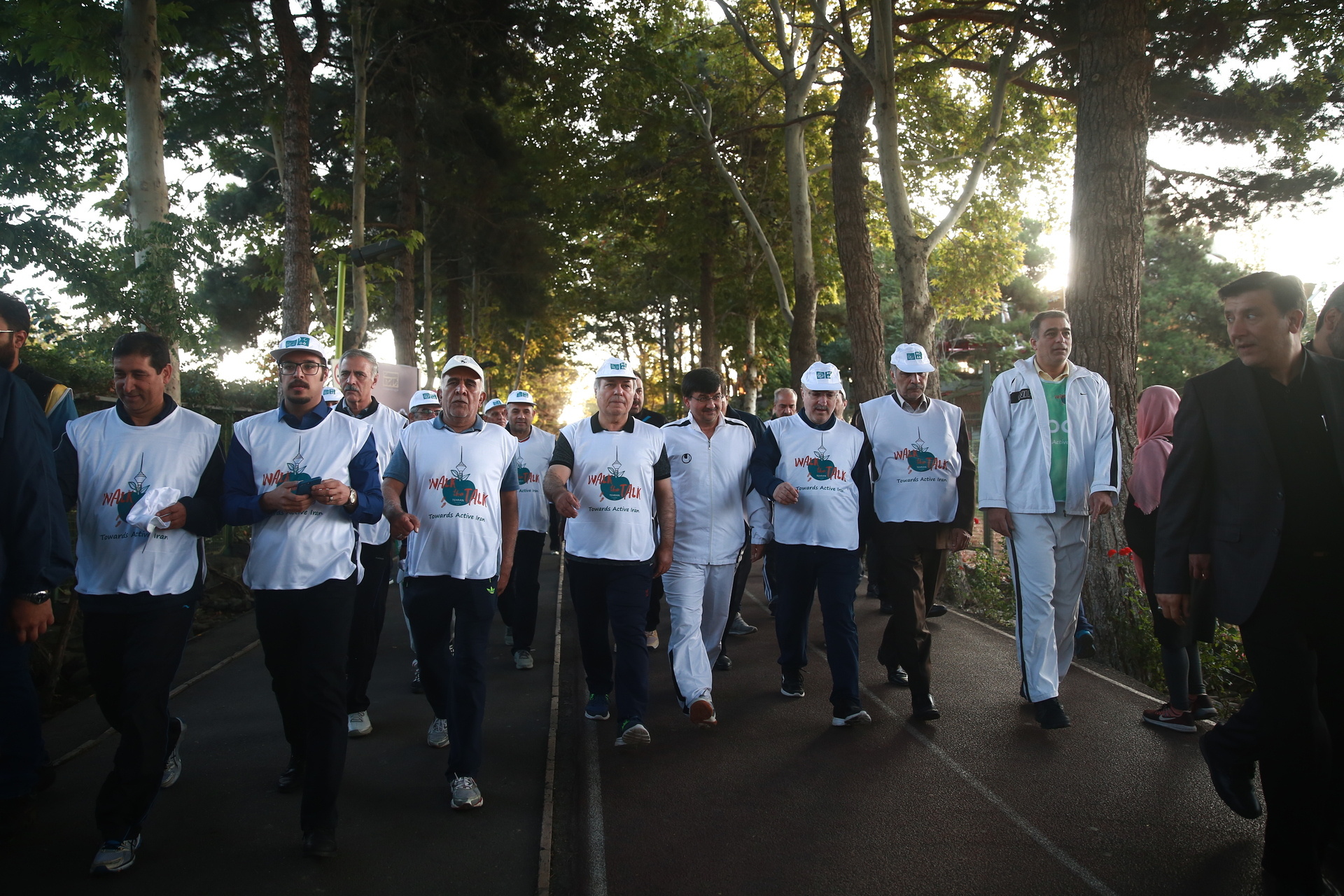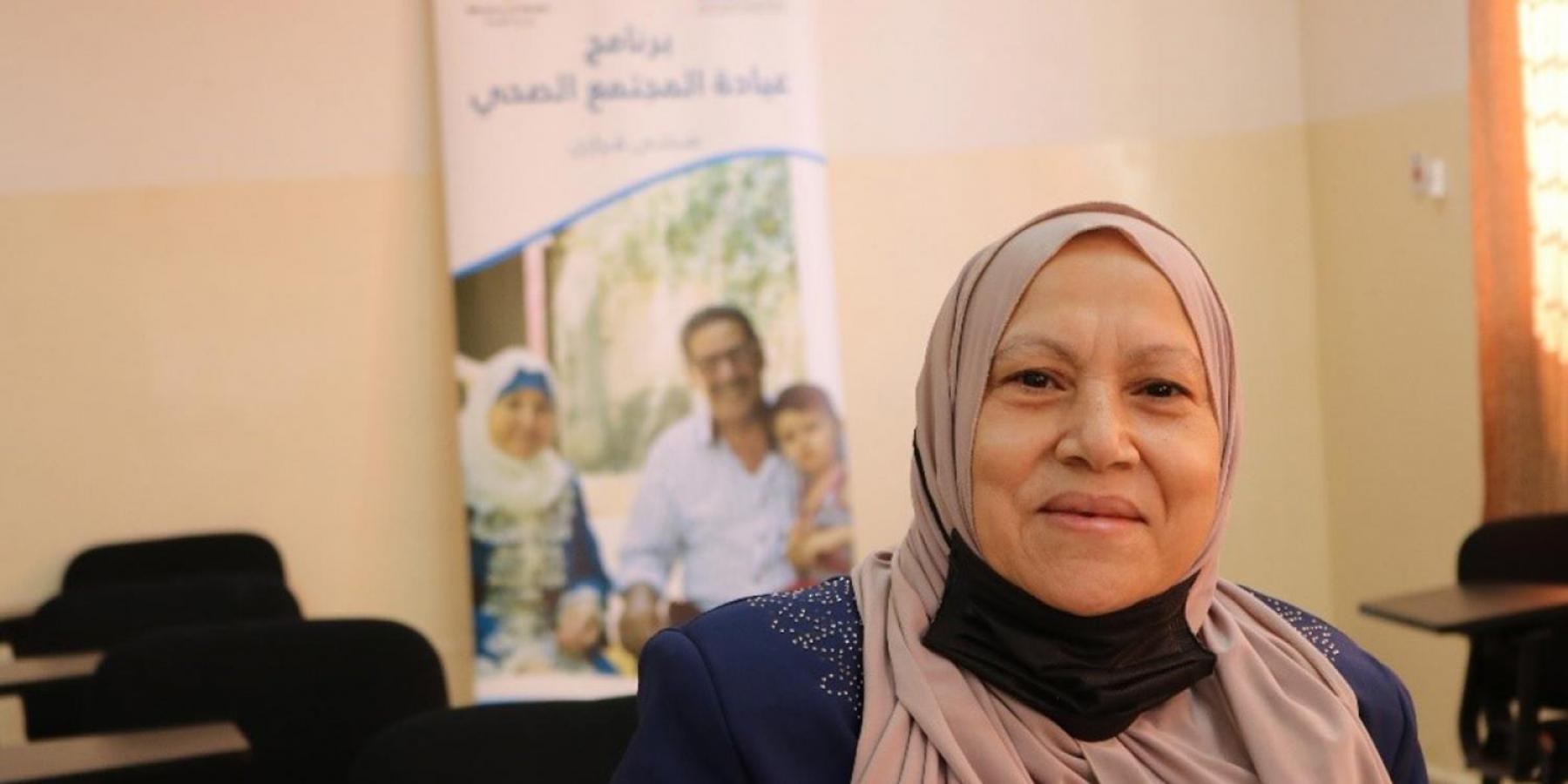Yemen was the centre of the world’s greatest humanitarian crisis for several years before the COVID-19 pandemic struck. Conflict and infrastructure collapse has left only 50% of health facilities fully functional. Poor vaccination coverage, minimal sanitation and population displacement have left the country vulnerable to disease outbreaks such as cholera and diphtheria. Noncommunicable disease (NCD) services are limited, with the majority of services offered by nongovernmental organizations. However, these organizations have collaborated with the Government to adapt and continue NCD provision during the pandemic.
 The Ministry of Public Health and Population, with support from WHO and the World Bank, has established sentinel site surveillance in Yemen for early detection of malnutrition.
The Ministry of Public Health and Population, with support from WHO and the World Bank, has established sentinel site surveillance in Yemen for early detection of malnutrition.
Médecins du Monde has provided vulnerable populations with essential NCD services in primary care facilities during the pandemic.
Yemen has adapted its nutrition programme to maintain the delivery of essential nutrition services to children under five and ensure COVID-safe screening and nutritional assessments.
Establishing the Nutritional Surveillance System
The Ministry of Public Health and Population, working with WHO, has established the Nutritional Surveillance System, a facility-based sentinel site surveillance system in district hospitals across Yemen. All children attending these health facilities are screened for all forms of malnutrition, so that treatment can be offered as early as possible.
In 2020, the Nutritional Surveillance System screened 307 000 children aged under five for malnutrition at over 140 nutritional surveillance sites across 21 governates. Screening enables early identification of individual cases and close monitoring of high-risk areas. For example, screening revealed that in July 2019, 41 districts reported very high rates of stunting.
The surveillance system is a collaboration between the Ministry of Public Health and Population and international partners, which shows that it is possible to set up surveillance systems even in conflict zones. Such systems enable authorities and nongovernmental organizations to target resources and interventions where they are most needed.
Médecins du Monde
At the outbreak of the COVID-19 pandemic, health service provision in Yemen was already heavily reduced by conflict, with only 50% of facilities fully functional. The pandemic has further stretched these services and affected supply chains, which have been experiencing shortages since 2015.
Médecins du Monde has offered NCD support services directly through their own teams or through government facilities. Other humanitarian organizations have provided various other health services.
In one Médecins du Monde facility in Yemen’s largest city, Sana’a, 30–40% of patients presented with NCDs. After the outbreak of the pandemic, Médecins du Monde rented a house near to its facility and used it as a triage and isolation building so that nurses could check the temperature of all patients and isolate those with COVID-19 symptoms. They set up a one-way system, gave all patients an appointment card for their next visit, a telephone consultation number and two to three months of medication where available.
This triage system provided a model for neighbouring facilities and is likely to be continued beyond the pandemic.
Maintaining essential nutrition services during the pandemic
WHO Yemen launched a nutrition programme in 2016. The goal was to improve child nutritional status through identification, referral, and treatment of children with wasting; to reduce morbidity and mortality associated with severe acute malnutrition; and to monitor the country’s nutritional situation. The two key pillars of this ongoing programme are:
- Inpatient management of children suffering from severe acute malnutrition and related medical complications
- The Nutritional Surveillance System
To increase access to treatment for severely malnourished children with medical complications, WHO has been covering the running costs of therapeutic feeding centres in 222 of Yemen’s priority districts and providing them with medical and non-medical supplies.
However, in order to ensure the continuity of these services during the pandemic, the nutrition programme had to be quickly adapted.
It was adapted in five steps:
- Situation analysis – identification of specific programmatic changes to be introduced to ensure the continuity and safety of prevention and treatment services during the pandemic
- Development of guidance documents, such as standard operating procedures aimed at infection control
- Consultation process about proposed standard operating procedures with all partners, including the Ministry of Health
- Capacity-building programmes to make it possible to introduce new standard operating procedures in nutrition services
- Incorporating the adaptation of the programme within nutrition services
The service adaptation was then implemented across Yemen and supported by WHO through the provision of PPE supplies.
As of September 2020, the Nutritional Surveillance System, therapeutic feeding centres, and isolation unit services shifted their standard operating procedures into context-specific adaptations. Standard operating procedure training was given to almost three thousand individuals by December 2020.
These adaptations allowed the nutrition programme to continue identifying and treating children suffering from malnutrition and its complications, even during the pandemic. Furthermore, the steps taken can be used as a blueprint for adapting such programmes to changing circumstances during emergency situations in any country.
This country story is part of a series on sharing successful strategies from the Eastern Mediterranean Region mitigating noncommunicable diseases and mental health disorders during the COVID-19 pandemic and beyond. Discover additional stories and insights in the full report published by the World Health Organization Regional Office for the Eastern Mediterranean.

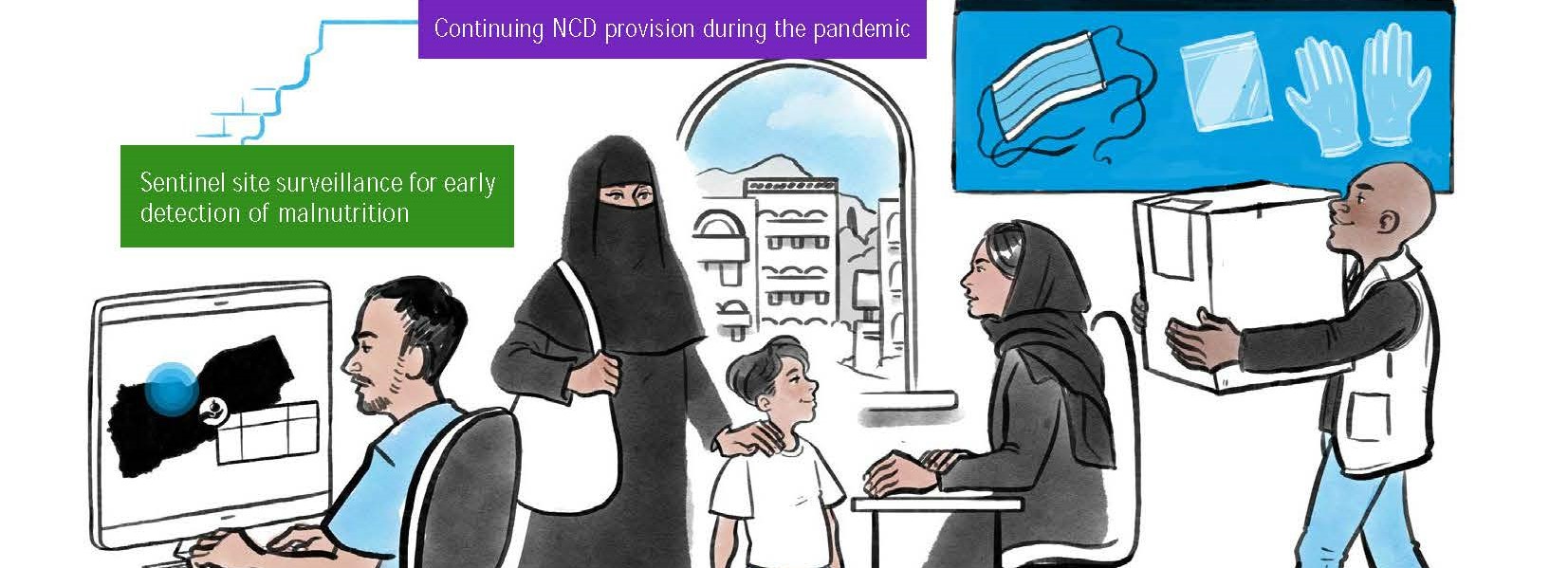
 The Ministry of Public Health and Population, with support from WHO and the World Bank, has established sentinel site surveillance in Yemen for early detection of malnutrition.
The Ministry of Public Health and Population, with support from WHO and the World Bank, has established sentinel site surveillance in Yemen for early detection of malnutrition.